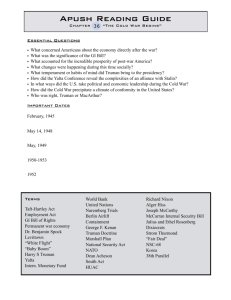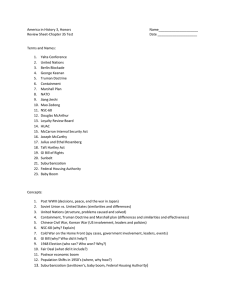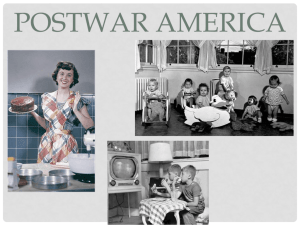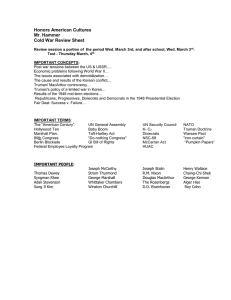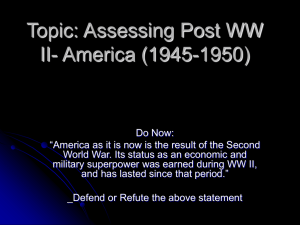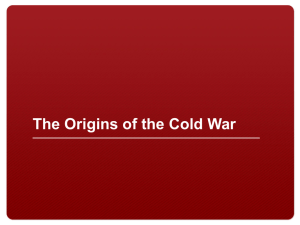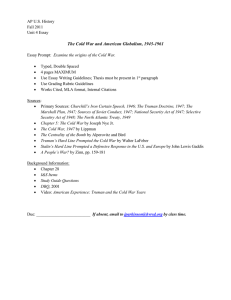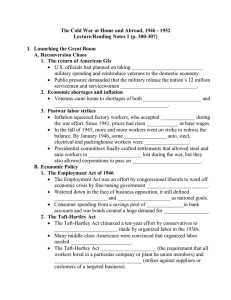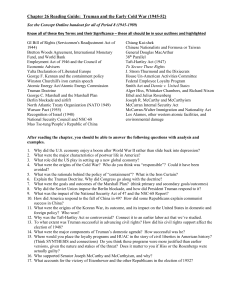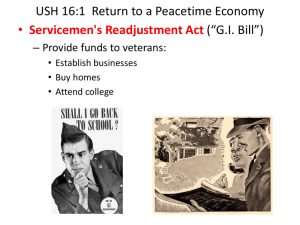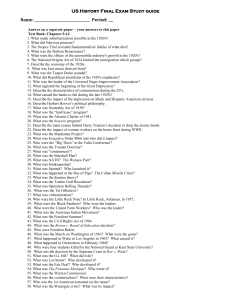Chapter 36 Overview
advertisement
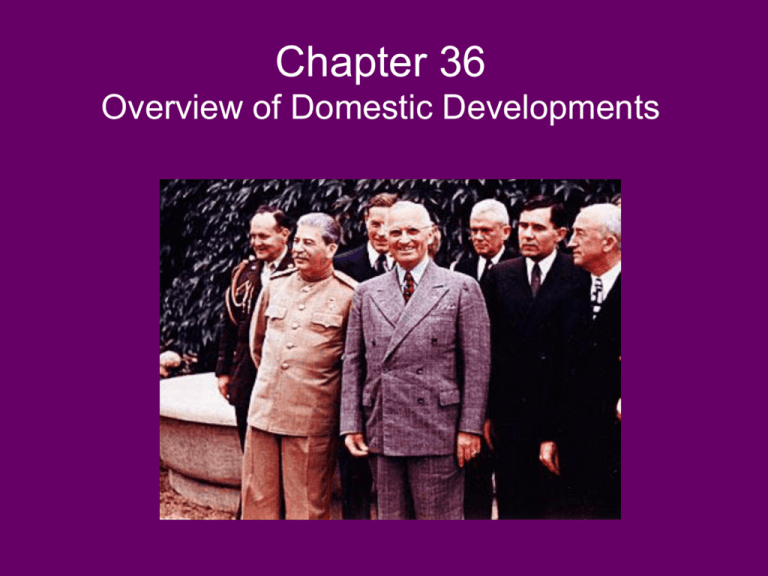
Chapter 36 Overview of Domestic Developments GI Bill (1944) The Servicemen’s Readjustment Act benefits included: • money for college or job training • loans for homes, farms, or businesses • unemployment pay of $20 a week for up to a year • assistance finding jobs Taft-Hartley Act (1947) • The Labor-Management Relations Act, commonly known as the Taft-Hartley Act, is a United States federal law that greatly restricts the activities and power of labor unions. The Act, still largely in effect, was passed over U.S. President Harry S. Truman, in 1947. Among other things, it outlawed the closed shop (union-only work place). Migration to the Sunbelt Levittown & Suburbanization • Affordable, mass-produced housing • How did rapid suburbanization affect the US? Baby Boom Number of births in the United States, 1934 to present The Second Red Scare Causes Federal Efforts to Eradicate Communism at Home • Federal Employees Loyalty Program • House Committee on Un-American Activities (HUAC) • Senate investigation led by Joseph McCarthy Truman Desegregates the Military • Executive Order No. 9981 on July 26 1948: "It is hereby declared to be the policy of the President that there shall be equality of treatment and opportunity for all persons in the armed services without regard to race, color, religion, or national origin." The Dixiecrats • Mayor Hubert Humphrey of Minneapolis urging the Democratic party to adopt an anti-segregationist plank in its platform, which it did. • Southern delegates walked out and formed the States’ Rights Dixiecrat Party and supported Strom Thurmond for the presidency instead of Truman. Election of 1948 Don’t Believe What You Read in the Paper The Fair Deal • Announced in the 1949 State of the Union address. • It was an ambitious program to improve housing, increase the minimum wage, extend social security, and increase support for farmers. • Due to congressional opposition, little was accomplished.
